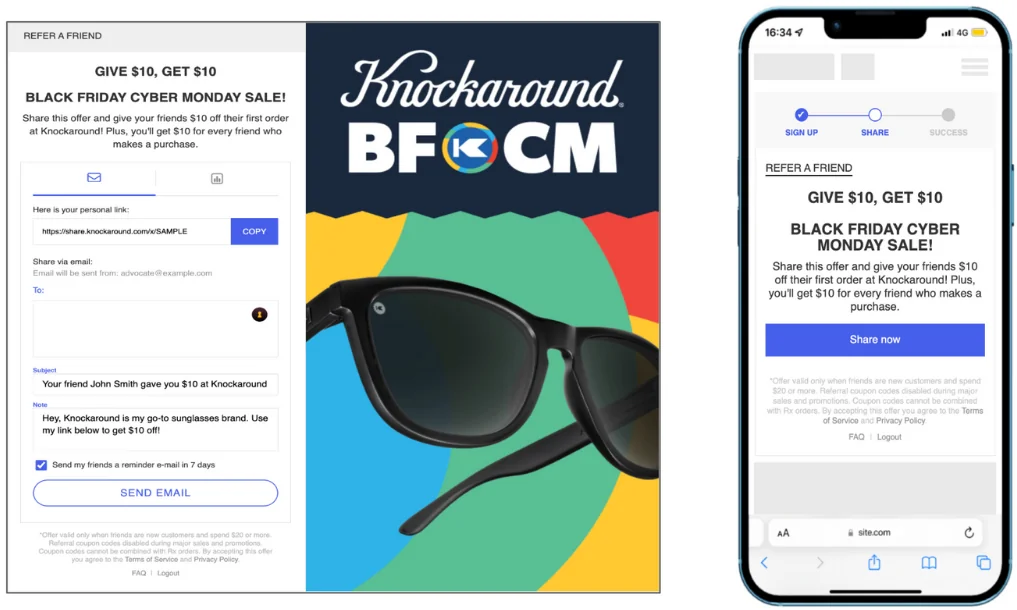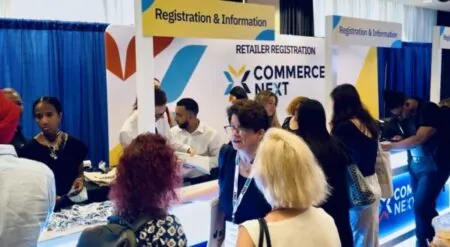Branding itself is branded. Although brand management is seen as a “soft” side of marketing, it can provide sustainable growth for a business. Recent studies show that 75% of shoppers are more likely to purchase from a company with a name they recognize.
Understanding the marketing that stands behind so many success stories helps explain why branded products are so powerful.
What Is Brand Awareness?
Brand awareness is the extent to which an individual is familiar with a product, service, or brand and recognizes it. How much do people know about the brand, and what do they associate with it? Brand awareness can be divided into two categories: top-of-mind and aided recall.
Top-of-mind awareness is when a brand is the first company a customer thinks of within a given industry. Let’s say David wants to buy a new laptop; what is the first brand he thinks of? For many people, including David, it’s Apple. This isn’t without reason; Apple has done an outstanding job with its brand awareness. The company has a unique lexicon and visual style. Top-of-mind awareness requires no additional research or input, as the brand name should be ingrained and intertwined with that customer’s perception of the product category.
Aided-recall, on the other hand, requires the customers’ memory to be jogged by using a logo, slogan, or other memorable aspect of a company such as a key product. Aided-recall would be when a customer knows that they want to purchase a new computer, but they can’t instantly remember the brand name of what they have in mind. They would have to see the Apple logo or have their slogan, “Think different.” jog their memory.
Being the first company remembered in a target audience’s mind will make them more likely to make a purchase from that business rather than a competitor. Things that help promote more brand awareness include:
- High-quality product: When a product is high-quality or is effective in serving its purpose, customers will be more inclined to bring repeat business as well as recommend the brand to others without hesitation.
- Stellar customer service: The experience a customer has had with a brand can be a determining factor if they choose to continue doing business with a brand and if they would be willing to recommend the brand to others. Going above and beyond with customer service can set a brand apart from the competition, and help them develop a reputation for caring about their customers.
- Effective marketing and advertising: Having and executing a comprehensive marketing plan to showcase a brand is essential to brand awareness. It is important for brands to be present and active in the channels that are relevant to their audience.
- Brand ambassadors and referrals: Tapping into the passionate customers of a brand to reach their organic networks can be an effective method of expanding a customer base on a personal level.
What Is a Branding Strategy?
Building a brand strategy is more than an eye-catching logo and a memorable motto. It is the sum of marketing methods, deep analysis, budgeting, and balancing between the personal vision and the customers’ real needs.
Overall, there are three main questions every brand must answer:
- What is the brand’s objective?
- Who are the customers?
- How does the brand define long-term success?
The answers to these questions will help to define a brand’s positioning in the market.
“Branded” Means Power?
MailChimp has shown love to its customers by answering “Yes!” to their request to add an email marketing feature, even though the company initially focused on web design. They have continued to strengthen their customer relationships by sending every newly registered user an adorable knitted cat hat.
They reported sending 13,440 gifts to their customers. Wired Magazine noted that “the quality of the merch is a direct reflection of MailChimp,” which means they didn’t just give out cheap freebies for the sake of brand awareness. If brands want to give out free merch, they should make sure they do it well!
The milk mustache along with the two-word slogan,“Got milk?” have become rooted in the public subconsciousness. The American campaign aimed to increase milk intake by spreading posters showing celebrities with milk mustaches on their faces and filming short videos which showed what life might look like without milk.
Nielsen rated the Got Milk? slogan twelve times more effective than the Pepsi slogan, and four times better than Coca-Cola’s “Enjoy!”
These three examples all focused on building an emotional connection with their customers rather than communicating features of their product. Over time, emotional and cultural attachment to a product can win out over other ad strategies .
Why Is Brand Strategy About Building Relationships?
What do people look for in a friend? Perhaps a person who treats others with kindness and respect. A reliable person. People look for the same qualities in brands. An Omnicom Media Group study tells us people in Generation Z expect the same qualities from brands as they expect from their friends. Given the accessibility of many brands through social media, real interactions can take place and deeper relationships can be established with relative ease.
Making marketing and branding strategies more human is catching on in the sales world. Some brands try to entertain by being funny while others are speaking up about issues people care about. Brands can also easily solicit feedback on their products and monitor conversations for honest feedback. More and more, marketing messages are beginning to portray the real personality of a brand.
Now imagine what will happen if a trusted friend tells our David a brand to check-out? Might he change his opinion if a friend recommends looking at a MacBook Pro instead of a MacBook Air, or suggests checking out HP?
According to Nielsen, 84% of people trust word-of-mouth recommendations as truthful. That means that there’s a very good chance David could change his purchasing choice based on what he hears from his friends. This majority reflects the true power and influence of hearing suggestions from people we trust, especially those with some degree of social proof or experience with the product in question.
Referral Program Is Part of Building Brand Strategy
Referral marketing is one of the few strategies that allows marketers and brand managers to generate brand awareness and acquire new customers simultaneously. When customers are motivated to spread the word about a brand with their friends and family, they also inherently advocate to those people that the brand is legitimate and worth considering. As a result, referral marketing gives products an identity that distinguishes them from less-distinguished competitors.
Refer-a-friend software helps facilitate this sharing by offering the advocates multiple share channels. For example, David’s share page is not limited by email, Facebook, and SMS share options. Different share channels have different strengths. The way to use them depends on the target audience.
Facebook is a good share channel for generating brand awareness. Based on Talkable’s data comparing channels based on different actions referred friends can take, Facebook generates 45.31% of clicks and 37.05% of website visits. However, Facebook is also the weakest share channel for converting those visitors. Shares through Facebook are a good way to make first contact with potential customers. It serves as a great introduction because it shows that the product was endorsed by a friend who is already a customer.
If converting more friends is the goal, offer email as a share channel. While emails bring fewer visits (18.45%) and clicks (11.12%), they convert 41.83% of friends, making email the highest-converting share channel.
SMS
Text messages offer a steady, middle-performing channel channel for sharing offers in terms of generating brand awareness and converting new customers. SMS gets 12.91% of shares, 3.94% of clicks, and 4.63% of visits. However, SMS helps acquire more new customers than Facebook, and generates 8.17% of friend purchases.
A Symbiosis of Success: Brand Ambassadors + Referrals
When scrolling through the social media pages of celebrities or influencers, it is common to come across a sponsored photo — perhaps a box with a company hashtag and a few words about the products in it. This is a typical example of how brands turn their fans into brand ambassadors. And that is one of the most effective types of branding strategies.
And the masters of this tactic are at Glossier.
The beauty brand startup has achieved unicorn status in 2019 with its latest funding worth $1.2 billion, according to the company. Their “Feeling like Glossier” campaign had a large presence on social media, and the company was especially good at integrating regular people. There are seven people who became faces of the brand, and all of them are Glossier community members.
In an Adweek interview, Glossier’s founder and CEO Emily Weiss stated that “[t]he idea of telling individual stories to inspire people to feel a certain way really has been the basis of every single thing we’ve created.”
Brand ambassadors give a product a feeling that connects people. One person becomes a guide link in the brand-people chain. Not only do ambassadors spread the word about a brand, they also spark a desire for competition.
Charitable eyewear company DIFF launched a comprehensive campaign with two-tiered awards for ambassadors. While sharing with one friend rewards $10 for purchases, sharing links with five turns into $75 to spend on the glasses, further incentivizing their customers to take on the role of a brand ambassador.
Customers can track their rewards earning progress on the site. They can see their number of shares and subsequent possible rewards. The site also shows the number of friends they successfully referred and the rewards they have earned.
These campaigns show how Talkable’s referral campaigns help to leverage brand ambassadors and bloggers through referrals. An Ambassador campaign targets certain valuable customers by giving them the opportunity to refer their friends in order to earn rewards.
Nothing promotes brands better than existing loyal customers. A marketer’s main task is to turn sharing behavior into a controlled and measurable channel, which referral marketing helps to achieve. From there, brands can start segmenting the audience and concentrating efforts on “brand ambassadors” and influencers — customers who have their own audience and are willing to be rewarded for promoting a product. Bigger rewards can be offered to incentivize more sharing, such as a limited collection item, steeper discount, or exclusive experience.
The value of a brand ambassador reward is higher than the ordinary reward so that the most valuable customers can be recognized. American Fitness Club, for example, decided to run a campaign with a highly engaging gift for their top brand advocates: a free trip!
In Conclusion
With a stronger brand strategy in place, prospective customers will be more likely to consider a brand when they want to make a purchase. Brands should frequently consider how they look in the eyes of their customers and whether they are succeeding in staying top-of-mind with their target audience.
Some ideas to generate awareness are generic, while some become trend-setting. Whatever approach a brand takes, it is important to recognize that brand awareness is cultivated over time with consistent output and intentional efforts to set themselves apart from the competition. Referral marketing and the empowerment of customers to share brand messaging and opportunities can be an invaluable tool to create sustainable growth over time.
For those that want to make sure that a referral marketing strategy is in place to generate additional brand awareness, book a demo with our team!




